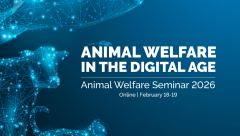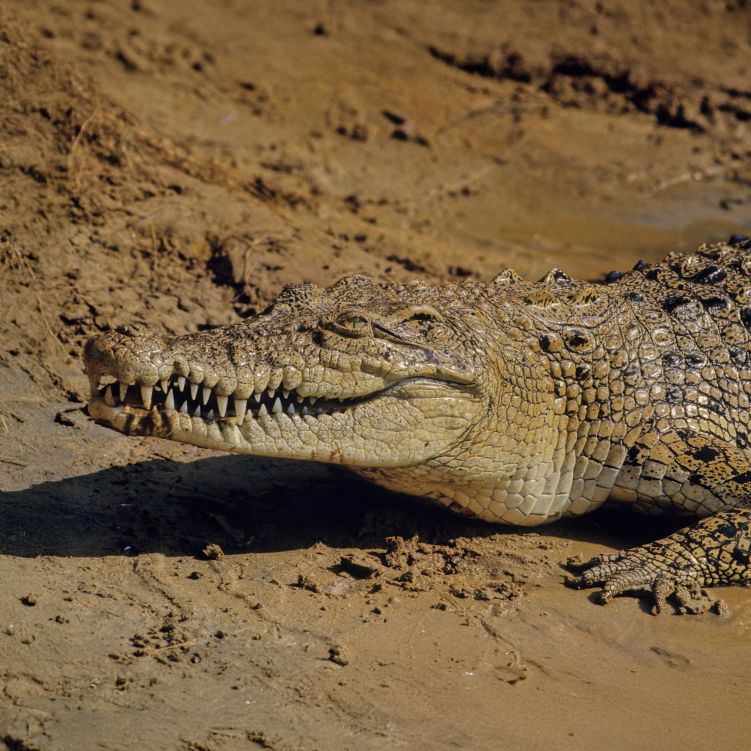Not far from some of Australia’s most popular travel destinations, thousands of saltwater crocodiles are confined in barren enclosures, intensively farmed and slaughtered to meet the international demand for luxury goods made from their skin. These sentient animals, who in the wild are powerful apex predators that play an important role in Australia’s ecosystem, are reduced to a life of deprivation, with a significantly shortened life spent in inadequate conditions. Sadly, in these circumstances, these incredible creatures are considered more valuable dead than alive.
Farmed intensively
Saltwater crocodiles have been commercially farmed in Australia since the 1970’s, with farms located mainly in the Northern Territory and Queensland, though also in Western Australia. Originally the farms were established to meet the growing demand for crocodile skins while providing an alternative to hunting them in the wild, with the latter having decimated their numbers to critically low levels.
To supply the farms, eggs are harvested from the wild, with government approval currently given to harvest up to 100,000 eggs annually in the Northern Territory, although some farms retain males and females for breeding. The harvested eggs are incubated for almost three months, and once the hatchlings reach 9-12 months old, they’re moved to outdoor pens. The pens are overcrowded, confining young crocodiles to very limited space. Compared to the wild, they are forced into close proximity with many others, limiting their ability to obtain personal space and increasing competition for food and/or escape from aggressive pen mates. Aggression amongst crocodiles in cramped pens may result in skin damage and painful injuries and being unable to choose to escape conflict in crowded and confined environments puts them at further risk of stress and fear.
As they grow, the young crocodiles are moved into solitary concrete pens, known in the industry as ‘grow-out’ pens. Designed to keep the crocodile’s skin blemish free before slaughter, these barren, plastic-lined pens deprive crocodiles of almost everything they need from their natural environment for their overall wellbeing. They spend their day in a small barren environment which severely limits the opportunity to exercise adequately and for natural behaviours to be expressed. Farmed crocodiles share the same behavioural and mental needs as their wild counterparts, to keep them confined and deprived of many of their basic needs is not just poor welfare, it’s cruel.
Once the crocodiles reach 1.5 to 1.8 metres in length they’re slaughtered. This is generally done by rendering the crocodile immobile with an electrical stunning wand followed by a mechanical stun with a captive bolt, then pithing either through the hole from the mechanical stunning or through the opening created by severing he spinal cord at the base of the skull. Slaughtering on farm in this way leads to many welfare concerns.
In the wild crocodiles can live up to 70 years of age, on farms they are slaughtered at 2 – 3 years old.
Farmed to fashion an unnecessary industry
The skins from saltwater crocodiles are internationally regarded by fashion manufacturers as the most desirable, and while the demand for many wild animal skins has declined due to welfare concerns, saltwater crocodile continues to be highly sought.
Australia is the largest supplier of saltwater crocodile skins globally, accounting for 60% of the global trade. Currently it is estimated that there are 21 crocodile farms operating in Australia, with 135,000 crocodiles farmed in the Northern Territory alone. The main export markets are Singapore, France, Japan and Italy where the skins are usually used to produce luxury items for high-end fashion houses. Commercial crocodile farming in Australia is primarily for skins, though meat is also sold for profit on a smaller scale.
The crocodile farming industry promotes its sustainability and positive economic impacts on local communities. However, the claims the industry has made regarding the economic and employment benefits to the Northern Territory have been found to be overstated, with a 2021 report finding the industry contributing just 0.23% to the Northern Territory GSP, and only 264 jobs at the time.
The industry claims to provide conservation benefits from crocodile farming. However, although this may have had some merit decades ago when wild crocodile populations were declining, this is not the case today. The growth in wild crocodile numbers in recent years is more likely due to the legislated ban on hunting, and community education programs, rather than the existence of a commercial farming industry.
Farmed to an outdated and inadequate Code of Practice
In order to export crocodile products, the minimum requirements for the care and management of farmed crocodiles are outlined in the Code of Practice on the Humane Treatment of Wild and Farmed Australian Crocodiles. The current version was published in 2009 and is, by its own admission, out of date. The Code states that it will be reviewed in five years’ time (from publication) and ‘it is anticipated’ that the Code will be reviewed and updated within 10 years. This has not happened.
Furthermore, 15 of the 24 studies and scientific papers that form the basis for the Code are from the last century in some cases published as far back as the 1970s. Even the most recent studies are 15 to 16 years old, well behind advancements in crocodile knowledge. The Code also acknowledges its own limitations stating it is ‘.. based on current knowledge about crocodile welfare issues and what is currently ‘thought to be best practice’ in humane handling techniques.’ It is concerning that a Code meant to ensure the care and humane management of farmed crocodiles is allowed to become so outdated and lacking current animal welfare science.
In 2023, the federal government announced an update of the code of humane treatment of wild and farmed crocodiles to incorporate new science and techniques, according to Environment Minister Tanya Plibersek. The updated code was expected to be finalised in 2024, but to date no further developments have been released.
Wildlife not fashion
Crocodiles are more than predatory, rugged reptiles. They are sentient animals who can feel pain, communicate widely and who have been observed to display strong maternal instincts to their young. In fact, several studies have indicated that reptiles are capable of experiencing stress, anxiety, distress, excitement, fear, frustration, pain, and suffering.
Growing concerns regarding animal welfare has led to the use of wild animal skins to become increasingly controversial, with consumer driven campaigns guiding many luxury brands to ban the use of exotic skins, including crocodile. By 2026, department store David Jones will also phase out all exotic skins, including ostrich, crocodile, alligator, lizard and snake, in a move that aligns with the company’s existing animal welfare policies, which already prohibit the sale of fur, angora rabbit wool and foie gras.
Caring individuals can do their part by choosing not to purchase items made from crocodile skin and not to visit captive crocodile tourism venues.







